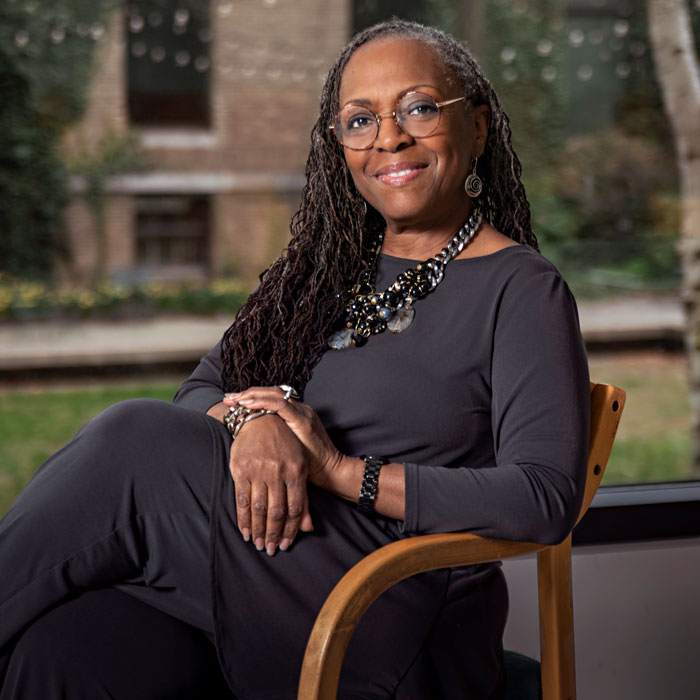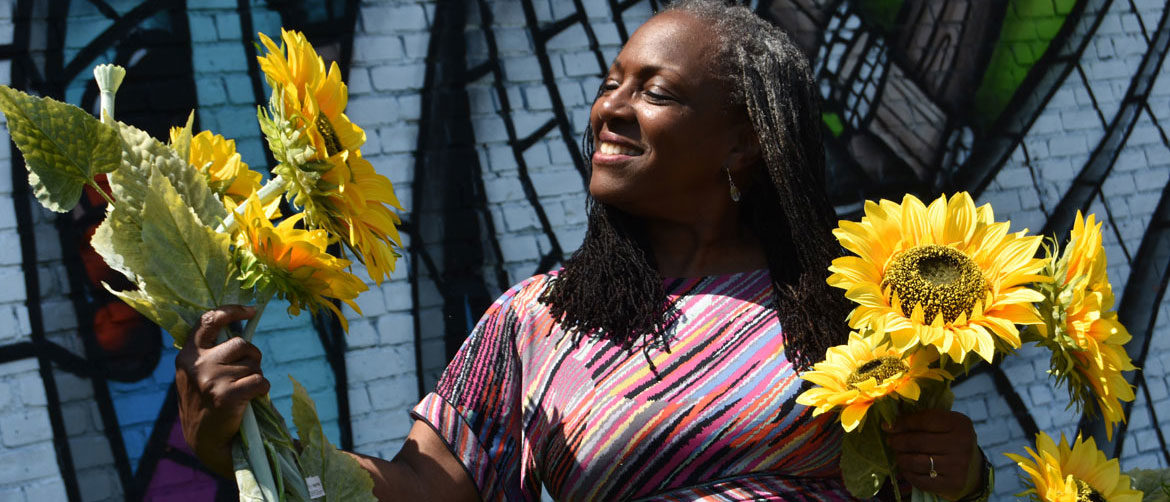Sunflowers and corn will sprout on the Museum of Fine Arts’ Huntington Avenue lawn as part of “Garden for Boston” from artists and activists Ekua Holmes of Boston’s Roxbury neighborhood and Elizabeth James-Perry who resides in South Coast Massachusetts.
The projects, the Boston museum says, are part of its “multi-year effort to recontextualize” Cyrus Dallin’s 1909 statue “Appeal to the Great Spirit,” depicting a Native American on horseback with his arms spread wide, which has stood on the museum’s front lawn since 1912.
The museum now says the statue is “a depiction of a Native American figure that represents an icon of the museum for some and a painful stereotype for others” because it is “based on an inaccurate accumulation of Native symbols and ultimately capitalized on the degrading myth of the ‘vanishing race.’”

James-Perry—an Aquinnah Wampanoag artist known for creating wampum belts, weaving sashes and bags from locally-harvested, hand-spun milkweed stalks with natural dyes, and fashioning pendants, collars and other jewelry from quahog shells—will create the installation “Raven Reshapes Boston: A Native Corn Garden at the MFA.” She and collaborators will surround Dallin’s statue with a field of corn, beans and sedges—grown in mounds using a traditional woodlands Native American method—in the shape of a horseshoe crab and framed by crushed quahog shells.
“‘Raven Reshapes Boston’ is a nod to the eastern Native story about the traditional knowledge keeper, Raven, who brought corn to the region for Native women to grow and sustain their families. The garden is meant to welcome, intrigue and provoke discussion. Situated around the Dallin statue, it will be a lively and authentically Native counterpoint to the controversial figure,” James-Perry says in a museum announcement. “The horseshoe crab shape, along with the white crushed oyster shell border, connects the planting to my coastal identity. It recalls rich sea harvests and coastal feasts, and is a reminder of the shell middens once ubiquitous in what is now a concrete cityscape. The garden is a reclamation of Boston as Indigenous land.”

Holmes’ installation “Radiant Community” will plant 3,000 sunflowers on the east side of the MFA’s Huntington Avenue lawn with help from United Neighbors of Lower Roxbury Community Gardens. The project expands upon her “Roxbury Sunflower Project,” through which she’s given away seeds and invited people to fill the neighborhood with flowers each summer, starting in 2018.
“Sunflowers represent, among other things, resilience, self-determination and the ability for a community to evolve and emerge while staying grounded in its history and traditions,” Holmes says in a museum announcement. “’Radiant Community’ is an invitation for the public to be surrounded by beauty, color and fragrance. The sunflowers’ essential attributes mirror those that are reflected in the cultural traditions of Roxbury’s Black community and must now be collectively amplified in our society.”
Holmes makes vibrant collages about Black life, which led to her becoming a children’s book illustrator, beginning with her 2016 Caldecott Honor-winning book “Voice of Freedom: Fannie Lou Hamer, Spirit of the Civil Rights Movement,” written by Carole Boston Weatherford. The exhibition “Paper Stories, Layered Dreams,” scheduled to be at the MFA from July 17, 2021 to Jan. 23, 2022, will showcase her illustrations as well as her independent art, including her portrait installations. Holmes is the community coordinator for Massachusetts College of Art and Design’s Sparc! ArtMobile, which brings hands-on art making into the community. And she serves as vice-chair of the Boston Art Commission and helped lead its process over the past year to remove the Emancipation monument from Boston’s Park Square in response to community complaints that its depiction of President Abraham Lincoln standing over a crouching Black man newly liberated from slavery was demeaning.
If this is the kind of coverage of arts, nature, cultures and activisms you appreciate, please support Wonderland by contributing to Wonderland on Patreon. And sign up for our free, (hopefully) weekly newsletter so that you don’t miss any of our reporting. (All content ©Greg Cook 2021 or the respective creators.)
